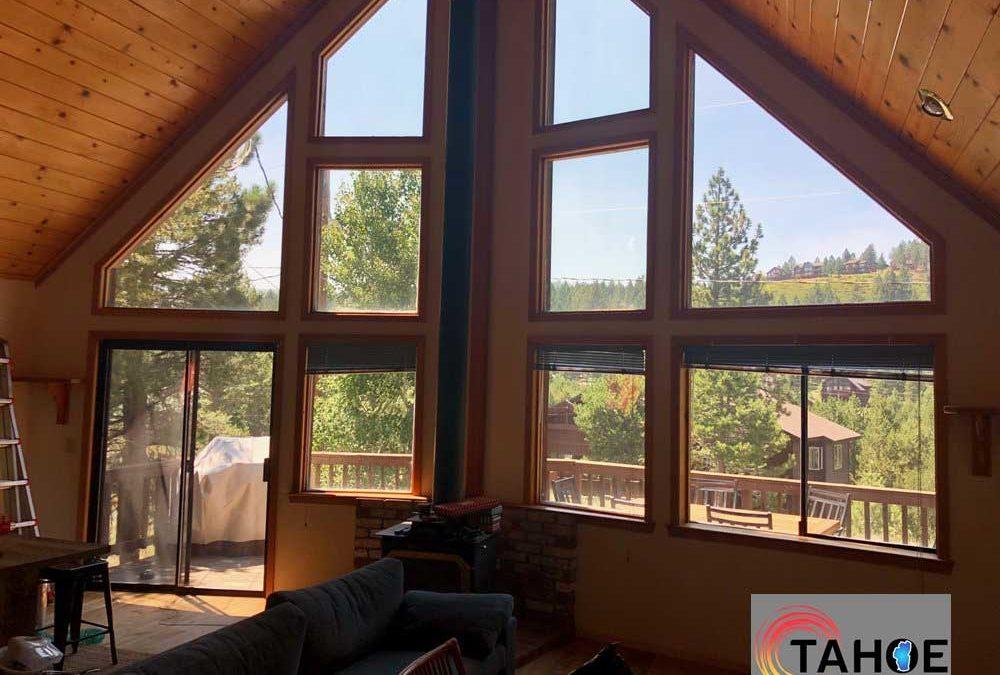Window tinting for homes has become increasingly popular for its benefits, including enhanced privacy, energy efficiency, and UV protection. However, despite its growing popularity, there are still several myths and misconceptions about window tinting that can make homeowners hesitant to try it. In this article, we’ll debunk some of the most common myths about home window tinting and clarify how this simple upgrade can improve the comfort and appearance of your home.
1. Myth: Window Tinting Makes Your Home Too Dark
One of the most common myths about window tinting is that it will make your home unbearably dark and block all natural light. While some tints do darken the windows significantly, there are plenty of options available that offer a clear view while still providing UV protection and glare reduction.
The Truth: Modern window tinting films come in a wide range of shades and levels of opacity. You can choose films that offer minimal darkening while still achieving benefits like heat rejection and UV protection. For example, ceramic films are known for offering excellent heat rejection and UV protection without significantly affecting the amount of visible light entering your home.
- Benefit: You can enjoy the benefits of window tinting without compromising the brightness of your home. There are films available that allow you to maintain natural light while still providing privacy and comfort.
2. Myth: Window Tinting is Only for Privacy
While privacy is certainly one of the top reasons people install window tinting, it’s far from the only benefit. Many homeowners believe that window tinting is only useful for keeping nosy neighbors from peeking into their homes. In reality, window tinting offers a wide range of functional advantages beyond privacy.
The Truth: Window tinting is an excellent way to:
- Reduce glare: If you’ve ever tried to watch TV or work on a computer while the sun is glaring through your windows, you know how frustrating it can be. Window tinting reduces glare and makes it easier to enjoy your space without being interrupted by harsh sunlight.
- Increase energy efficiency: Window tinting films help control indoor temperature by blocking solar heat in the summer and retaining warmth in the winter, ultimately reducing your heating and cooling costs.
- Protect interiors from UV damage: Tinting blocks up to 99% of harmful UV rays, protecting your furniture, flooring, and artwork from fading and deterioration.
- Benefit: Window tinting offers a comprehensive solution to issues like glare, UV damage, and energy inefficiency, in addition to privacy.
3. Myth: All Window Tints Are the Same
Another common misconception is that all window tints are the same and that they all offer the same level of protection or performance. In reality, there are several different types of window films, each with distinct characteristics and advantages.
The Truth: There are different types of window tinting films, including:
- Dyed Films: These are the most affordable but tend to fade over time. They reduce glare and privacy but don’t offer as much heat or UV rejection as other options.
- Metalized Films: These films contain metallic particles that reflect heat and light, providing excellent heat rejection and durability.
- Ceramic Films: Known for their superior performance, ceramic films provide high heat rejection, UV protection, and clear visibility without the reflective appearance of metalized films.
- Low-E Films: These films are designed to reflect heat back into the room during the winter while blocking solar heat in the summer, making them excellent for year-round energy efficiency.
- Benefit: Depending on your needs, you can choose from a variety of films that offer specific benefits like better heat rejection, UV protection, or privacy.
4. Myth: Window Tinting Will Ruin My Windows
Some homeowners worry that applying window tinting will damage their windows or leave permanent marks. While this may have been true with older films or poor-quality installations, modern window tinting is designed to be safe for glass windows.
The Truth: High-quality window films are designed to be installed without causing damage to your windows. In fact, many window films can actually help strengthen the glass, making it more shatter-resistant. The adhesive used for window tinting is designed to bond securely to the glass without leaving any residue when removed by professionals.
- Benefit: Window tinting will not damage your windows when installed correctly, and it may even improve the safety of your windows by preventing glass shards from scattering in case of breakage.
5. Myth: DIY Window Tinting is Just as Good as Professional Installation
DIY window tinting kits are widely available and may seem like an easy way to save money. However, many homeowners believe that DIY kits can provide the same quality and durability as professional installation. This is not always the case.
The Truth: While DIY window tinting can work for some small projects, it’s often difficult to achieve the smooth, bubble-free finish that a professional installer can provide. Professional window tinting installers have the expertise, tools, and experience needed to apply the film correctly and ensure a long-lasting, high-quality result. Poorly applied tinting can lead to issues such as bubbles, peeling, and uneven film that may need to be replaced sooner than expected.
- Benefit: Professional installation ensures that the window tint is applied flawlessly and lasts longer, with the added benefit of warranty coverage in case any issues arise.
6. Myth: Window Tinting is Only for Hot Climates
While it’s true that window tinting is particularly effective at reducing heat in hot climates, many people mistakenly believe it’s unnecessary in cooler areas. However, window tinting can benefit homes in any climate by improving energy efficiency and protecting interiors from UV rays.
The Truth: Window tinting is useful in all climates. In hot climates, it helps reduce the heat entering your home and keeps it cooler in the summer. In colder climates, window tinting films with Low-E coatings help reflect heat back into the room, making it easier to maintain a comfortable indoor temperature in the winter. Additionally, the UV protection provided by window tinting helps protect your furniture, flooring, and artwork from fading, regardless of the climate.
- Benefit: Window tinting helps in both hot and cold climates by regulating indoor temperatures and offering UV protection year-round.
7. Myth: Window Tinting is Expensive
Many homeowners hesitate to install window tinting because they assume it will be expensive. While there is an upfront cost, the long-term benefits make it a worthwhile investment for most homeowners.
The Truth: Window tinting is a cost-effective way to improve your home’s comfort, energy efficiency, and interior protection. The installation cost will depend on the type of film, the number of windows, and the complexity of the installation, but many homeowners find that the energy savings and protection from UV damage make it a smart investment. Over time, window tinting can help lower cooling and heating costs, and the protection it provides can extend the life of your furniture and flooring.
- Benefit: The initial cost of window tinting is often offset by the long-term savings on energy bills and the extended lifespan of your home’s interior.
Conclusion
Window tinting is a powerful tool for improving your home’s privacy, comfort, energy efficiency, and UV protection, but there are many myths surrounding it. By debunking these myths, it’s clear that window tinting can benefit homeowners in a variety of ways, no matter the climate or style of home. If you’re considering window tinting, remember to choose the right type of film, opt for professional installation, and enjoy the long-term benefits of a cooler, more energy-efficient, and better-protected home.

